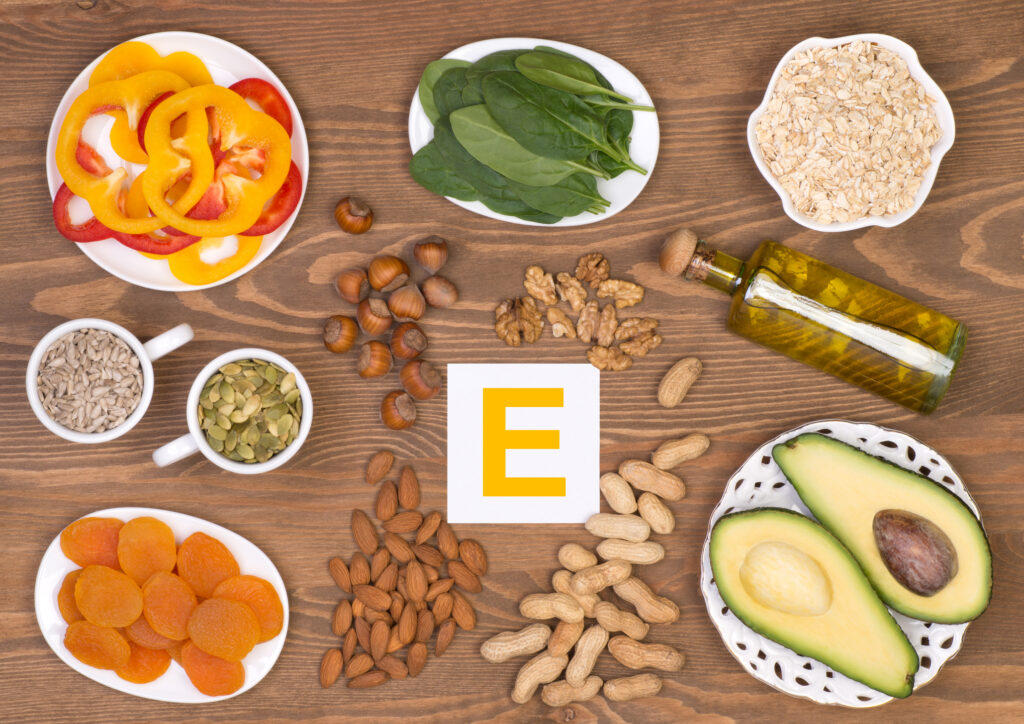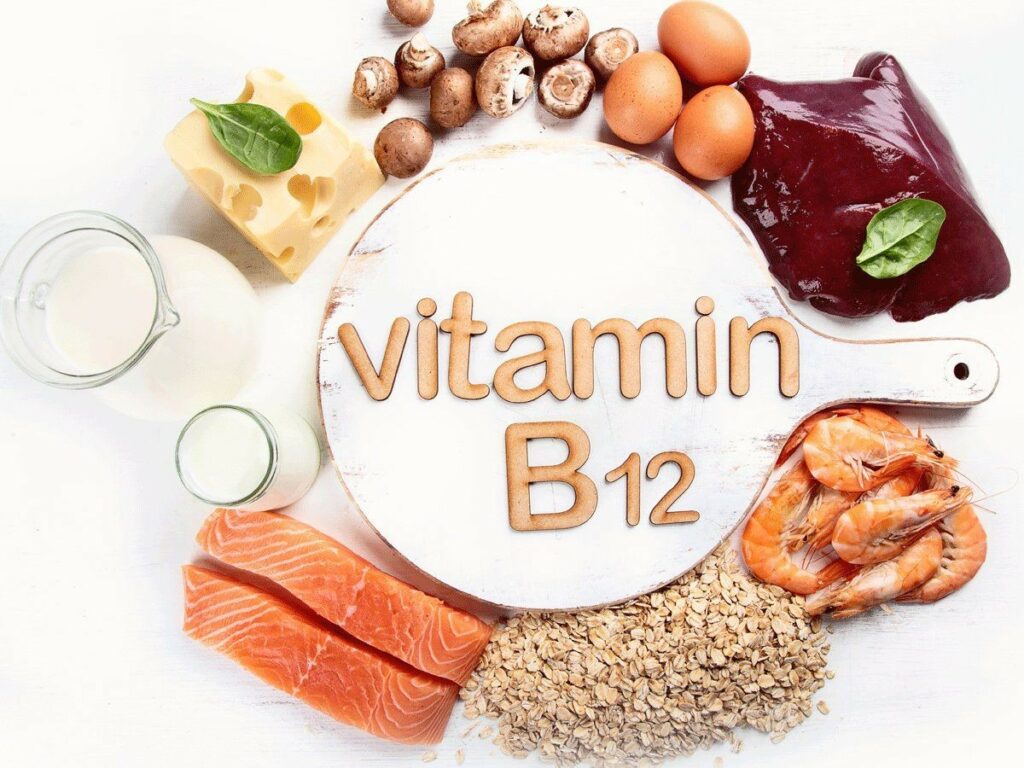Vitamin A is a vital nutrient that plays a crucial role in maintaining good vision, promoting a healthy immune system, and ensuring the proper functioning of many vital organs. In this guide, we will explore the importance of Vitamin A for eye health, its benefits, sources, and how to ensure you are getting enough of it in your diet.
What is Vitamin A?
Vitamin A is a fat-soluble vitamin that is essential for various bodily functions, including vision, immune system performance, and cell growth. It exists in two primary forms in the human diet: preformed Vitamin A (retinol and retinyl esters) found in animal products, and provitamin A carotenoids (such as beta-carotene) found in plant-based foods.
The Two Forms of Vitamin A
Preformed Vitamin A
Preformed Vitamin A is found in animal products like liver, fish oils, eggs, and dairy products. It is readily absorbed and utilized by the body.
Provitamin A Carotenoids
Provitamin A carotenoids, such as beta-carotene, are found in colorful fruits and vegetables like carrots, sweet potatoes, spinach, and kale. These compounds are converted into retinol in the body and used as needed.
The Role of Vitamin A in Eye Health
Vitamin A is indispensable for maintaining healthy vision. It plays a significant role in several key processes that are crucial for eye health.
Vision and Light Perception
One of the primary roles of Vitamin A in vision is its involvement in the formation of rhodopsin, a pigment found in the retina. Rhodopsin is essential for seeing in low-light conditions. When light hits the retina, rhodopsin undergoes a chemical change, triggering a signal to the brain that results in vision. Without adequate Vitamin A, the production of rhodopsin is compromised, leading to night blindness.
Corneal Health
Vitamin A is essential for maintaining the integrity and function of the cornea, the clear front surface of the eye. It helps in the production of mucoproteins, which keep the cornea moist and clear. A deficiency in Vitamin A can lead to a condition called xerophthalmia, which is characterized by dryness and thickening of the cornea, potentially leading to blindness.
Prevention of Age-Related Macular Degeneration (AMD)
Age-related macular degeneration (AMD) is a common cause of vision loss in older adults. Antioxidant properties of carotenoids like beta-carotene, lutein, and zeaxanthin help protect the eyes from oxidative stress, reducing the risk of AMD.
Benefits of Vitamin A for Eye Health
Vitamin A offers numerous benefits for maintaining and improving eye health.
Improved Night Vision
Adequate intake of Vitamin A can prevent night blindness and improve the ability to see in low-light conditions. This is particularly important for activities like driving at night or moving around in dimly lit environments.
Reduced Risk of Eye Diseases
Regular consumption of Vitamin A-rich foods or supplements can help reduce the risk of various eye diseases, including cataracts and age-related macular degeneration (AMD).
Enhanced Eye Moisture
Vitamin A supports the production of moisture in the eyes, preventing dryness and reducing the risk of eye infections. This is especially beneficial for individuals who spend long hours in front of screens or in dry environments.
Prevention of Eye Infections
Vitamin A boosts the immune system, helping to prevent eye infections. It plays a role in maintaining the integrity of mucous membranes, which act as a barrier against harmful bacteria and viruses.
Sources of Vitamin A
Ensuring an adequate intake of Vitamin A can be achieved through a balanced diet that includes both animal and plant-based sources.
Animal-Based Sources
Animal-based sources of Vitamin A are rich in retinol, the active form of the vitamin that the body can readily use.
- Liver: Beef liver and chicken liver are some of the richest sources of Vitamin A.
- Fish Oils: Cod liver oil is an excellent source of Vitamin A.
- Dairy Products: Milk, cheese, and butter provide a good amount of Vitamin A.
- Eggs: Egg yolks are a significant source of Vitamin A.
Plant-Based Sources
Plant-based sources of Vitamin A contain provitamin A carotenoids, which are converted into retinol in the body.
- Carrots: Rich in beta-carotene, carrots are a well-known source of Vitamin A.
- Sweet Potatoes: These are high in beta-carotene and provide a substantial amount of Vitamin A.
- Leafy Greens: Spinach, kale, and collard greens are excellent sources of carotenoids.
- Fruits: Mangoes, apricots, and cantaloupes are rich in beta-carotene.
Vitamin A Supplements
In some cases, it may be challenging to get enough Vitamin A from diet alone. Vitamin A supplements are available in various forms, including retinyl palmitate, retinyl acetate, and beta-carotene. It is essential to consult with a healthcare provider before starting any supplement to ensure proper dosage and avoid toxicity.
Recommended Daily Intake of Vitamin A
The recommended daily intake of Vitamin A varies based on age, sex, and life stage. The following are the general guidelines:
- Infants (0-12 months): 400-500 micrograms (mcg) of retinol activity equivalents (RAE) per day.
- Children (1-8 years): 300-400 mcg RAE per day.
- Males (9-13 years): 600 mcg RAE per day.
- Females (9-13 years): 600 mcg RAE per day.
- Males (14 years and older): 900 mcg RAE per day.
- Females (14 years and older): 700 mcg RAE per day.
- Pregnant women: 770 mcg RAE per day.
- Lactating women: 1,300 mcg RAE per day.
Signs of Vitamin A Deficiency
Vitamin A deficiency can lead to several health issues, particularly affecting vision and immune function.
Night Blindness
One of the earliest signs of Vitamin A deficiency is night blindness, where individuals find it difficult to see in low-light conditions.
Dry Eyes
A deficiency in Vitamin A can cause dryness and irritation in the eyes, leading to conditions such as xerophthalmia.
Increased Risk of Infections
Vitamin A plays a crucial role in maintaining the integrity of the skin and mucous membranes. A deficiency can lead to a higher susceptibility to infections, including respiratory and gastrointestinal infections.
Skin Issues
Vitamin A deficiency can cause dry, rough skin and increase the risk of developing skin conditions like eczema.
Potential Risks of Excessive Vitamin A Intake
While Vitamin A is essential for health, excessive intake can lead to toxicity, particularly when consuming high doses of preformed Vitamin A from animal sources or supplements.
Symptoms of Vitamin A Toxicity
- Nausea and Vomiting: High doses of Vitamin A can cause nausea, vomiting, and dizziness.
- Headaches: Persistent headaches can be a sign of Vitamin A toxicity.
- Blurred Vision: Excessive intake can lead to vision problems, including blurred vision.
- Bone Pain: Chronic intake of high doses can cause bone pain and increase the risk of fractures.
- Liver Damage: Very high doses of Vitamin A can cause liver damage and other serious health issues.
Ensuring Adequate Vitamin A Intake
To ensure adequate Vitamin A intake, it is essential to consume a balanced diet that includes a variety of foods rich in both preformed Vitamin A and provitamin A carotenoids.
Dietary Tips
- Include Colorful Vegetables: Incorporate a variety of colorful vegetables in your diet, such as carrots, sweet potatoes, and leafy greens.
- Consume Animal Products in Moderation: Include sources of preformed Vitamin A like liver, fish, dairy products, and eggs in moderation.
- Consider Fortified Foods: Some foods, like milk and cereals, are fortified with Vitamin A and can help meet your daily requirements.
- Use Cooking Methods that Preserve Nutrients: Avoid overcooking vegetables, as excessive heat can reduce the vitamin content.
Supplements
If you have difficulty meeting your Vitamin A needs through diet alone, consider taking a supplement. However, always consult with a healthcare provider before starting any supplement to ensure it is necessary and safe for you.
10 FAQs About Vitamin A and Eye Health
What is the primary role of Vitamin A in eye health?
Vitamin A is essential for the formation of rhodopsin, a pigment in the retina that allows us to see in low-light conditions. It also maintains the health of the cornea and prevents dryness and infections in the eyes.
How can I tell if I am deficient in Vitamin A?
Common signs of Vitamin A deficiency include night blindness, dry eyes, frequent infections, and dry, rough skin. If you experience these symptoms, consult a healthcare provider for evaluation.
Can I get too much Vitamin A from my diet?
It is unlikely to get too much Vitamin A from food sources alone. However, excessive intake from supplements or animal sources like liver can lead to toxicity. It is important to follow recommended guidelines and consult with a healthcare provider.
Are there any plant-based sources of Vitamin A?
Yes, plant-based sources of Vitamin A include colorful fruits and vegetables like carrots, sweet potatoes, spinach, kale, mangoes, and apricots. These contain provitamin A carotenoids, which are converted into retinol in the body.
Is it better to get Vitamin A from food or supplements?
It is generally best to get Vitamin
- Gaunt Face And Cheeks Treatment Near Chertsey, Surrey - May 8, 2025
- Lip Flip Treatment Near Tandridge, Surrey - May 6, 2025
- Dermal Fillers Near Littleton, Surrey - May 6, 2025




